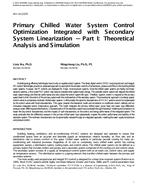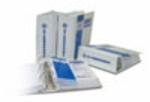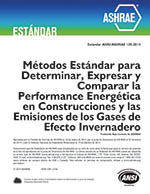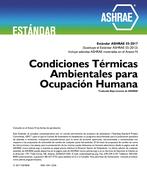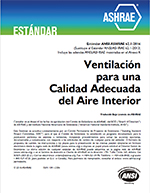Description
Building energy efficiency technologies have to rely on capable control systems. The direct digital control (DDC) and proportional and integral (PI) control technologies provide an advanced approach to accomplish the complex controls of temperature, pressure and flow in the building chilled water systems. However, the PI controls are developed for linear, time-invariant systems. Since the chilled water systems are highly non-linear dynamic systems, a fine tuned PID control may become unstable when system loads change. The unstable control system will degrade the chilled water system energy and thermal performance and also reduce the control system life span. Therefore, superior control is required at the primary system level to link the control of the primary system with the nonlinearities of the secondary system. The conventional approach is to design special control valves to compensate nonlinear chilled water systems. Unfortunately the dynamic characteristics of HVAC systems cannot be compensated by the control valves with fixed characteristics. This paper presents the theoretical model and simulation on traditional control methods and an innovative integrated control linearization approach. The model integrates the primary chilled water pump head and water loop differential pressure under differing load distributions. Characterization of the secondary system was conducted through theoretical modeling and simulation to reveal the key control characteristics and the impacts of such characteristics on the control and energy performance of the integrated system. The study concludes that the differential pressure in the primary chilled water loop substantially impacts the control performance and stability of the secondary system. The nonlinear characteristics can be dynamically reduced through an integrated approach, resetting the water supply temperature and pressure control.
Citation: ASHRAE Papers CD: 2014 ASHRAE Winter Conference, New York, NY
Product Details
- Published:
- 2014
- Number of Pages:
- 8
- File Size:
- 1 file , 670 KB
- Product Code(s):
- D-NY-14-C076
